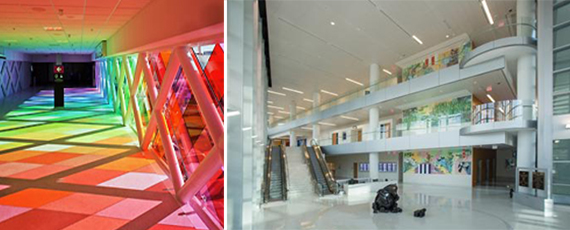Trending
Builders balk at Miami’s proposed Art in Public Places fee

Local developers are putting up heavy resistance against a city of Miami effort to fund or place public art in private projects.
Last week, the Miami City Commission delayed a final vote on the measure, amid a chorus of opposition from local builders and trade groups claiming the legislation was unfair and required more tinkering.
“We ask you to refrain [from imposing] an art impact fee on privately financed projects at this time,” said Truly Burton, Builders Association of South Florida’s executive vice president. “We are not saying ‘no.’ We are saying ‘not yet.'”
According to the proposed resolution, the city of Miami’s Art in Public Places program has been dormant for many years while other municipalities such as Doral, Miami Beach and Coral Gables have aggressively pushed developers to either include public art on their properties or contribute funds for art on government sites and public right of ways. The program would be applied to any private development with a construction cost of at least $1 million and at least seven units.
Miami’s building department would be responsible for calculating the public art fee for developers who don’t place artworks on their properties. However, art pieces must have a minimum value of 1.25 percent of the project’s total cost, excluding land acquisition and off-site improvement costs. Any artwork would have to be approved by an Art in Public Places advisory board and conform to the city’s proposed public art master plan and program guidelines.
During the Miami City Commission meeting last week, Wynwood Business Improvement District Chairman Joseph Furst and BID board member David Polinsky warned that the proposed guidelines were flawed because the plethora of whimsical murals on buildings and walls in the trendy neighborhood would not qualify under the public art program.
“The legislation as an idea is fantastic, but as it relates to Wynwood, it needs work,” Furst said. “The reality is that every single piece of art in Wynwood that have become tourist attractions would not qualify.”
Polinsky said the problem with the proposed guidelines is that it would require artists to be internationally recognized for their work and would require appraisals of the artwork. “Our mural art can’t be appraised because it’s not for sale and we paint them over at least once a year for Art Basel,” Polinsky said.
Steven Wernick, an Akerman partner specializing in planning and zoning matters, told city commissioners that the approval process for public art in a private development could take weeks or longer. As a result, many developers and property owners may opt to just pay the fee.
Burton of the Builders Association also said the timing of the legislation was an issue given that the residential condo market is in a slowdown. “The economy is very soft right now,” she said. “Bring it back in a couple of years. That allows us time to discuss with staff what the fee should be.”




